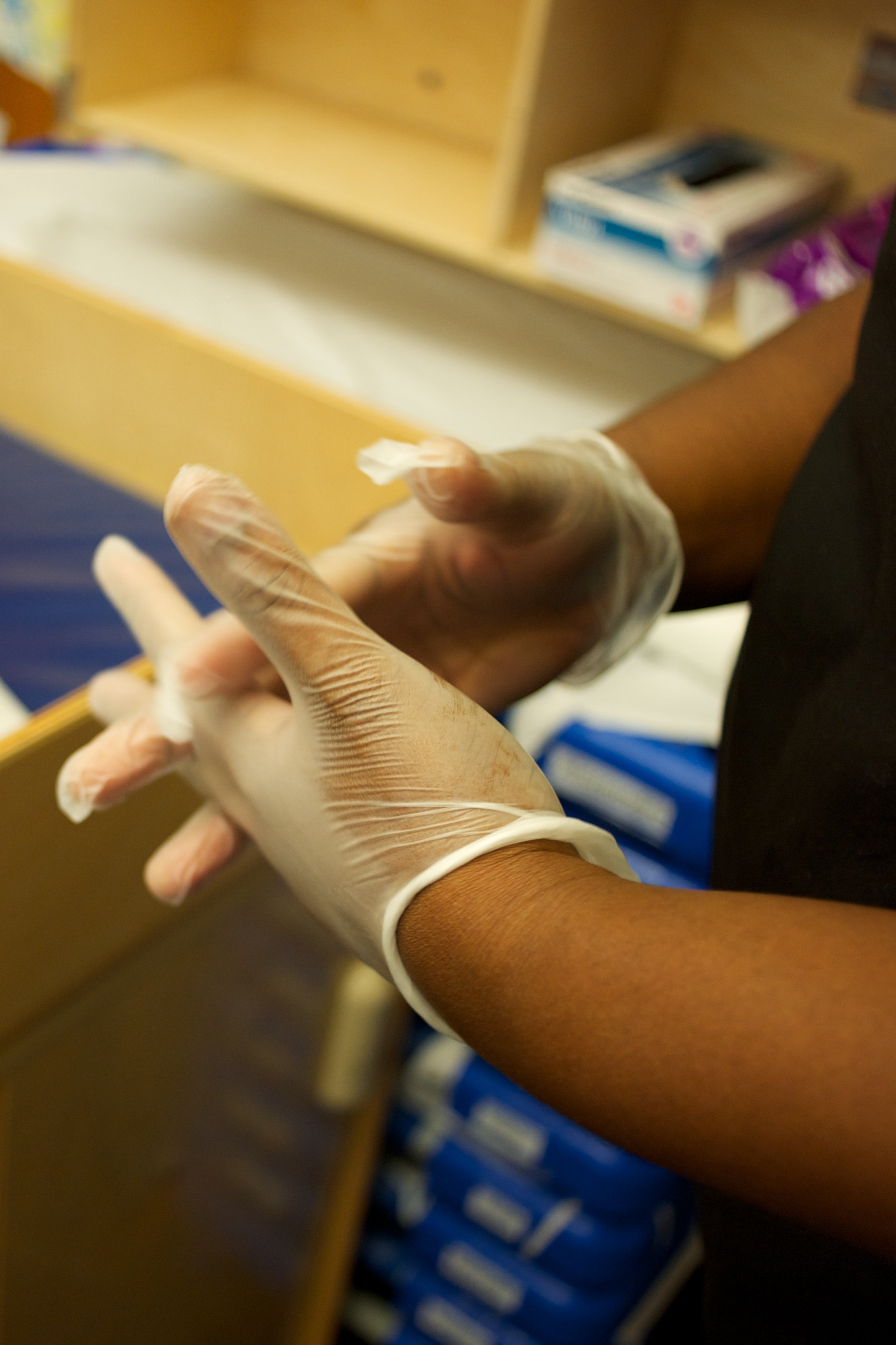 Standard precautions prevent the spread of bloodborne diseases, such as hepatitis B and HIV, and they also protect against other kinds of infectious diseases in early childhood programs. Germs can spread from person to person through blood and body fluids. Staff should use standard precautions in all situations where they may touch blood or body fluids. The U.S. Department of Labor’s Occupational Safety and Health Administration (OSHA) requires people to be protected from exposure to infectious diseases while they’re working. OSHA requirements include staff training on standard precautions.
Standard precautions prevent the spread of bloodborne diseases, such as hepatitis B and HIV, and they also protect against other kinds of infectious diseases in early childhood programs. Germs can spread from person to person through blood and body fluids. Staff should use standard precautions in all situations where they may touch blood or body fluids. The U.S. Department of Labor’s Occupational Safety and Health Administration (OSHA) requires people to be protected from exposure to infectious diseases while they’re working. OSHA requirements include staff training on standard precautions.
Standard precautions include:
- Wearing nonpermeable gloves to prevent contact blood or body fluids
- Properly washing hands after removing gloves
- Using a U.S. Environmental Protection Agency (EPA)-registered disinfectant on surfaces contaminated by blood or body fluids
- Disposing of soiled tissues, paper towels, diapers, etc., in a sealed plastic bag
- Sending clothing soiled with body fluids home in a sealed plastic bag to be washed
Use standard precautions when:
- Diapering children
- Handling body fluids of any kind (except human milk)
- Giving first aid (such as cleaning cuts and scrapes and applying bandages)
- Helping a child with a bloody nose
- Using sharps such as needles for injections or lancets for blood testing
Tips and Strategies Related to Standard Precautions
- Have nonpermeable gloves in all sizes to make sure they fit well; avoid latex gloves because of allergies.
- Choose furnishings and equipment that are easy to clean and disinfect; avoid carpeting.
- Help staff get their hepatitis B vaccination.
- Have hand-washing sinks in all teaching and learning areas.
- Use EPA-registered disinfectants according to the label instructions.
- Use nonporous mats for diaper changing surfaces.
- Use a garbage can with a plastic liner and foot pedal in the diapering and toileting areas.
- There is no need to wear gloves when bottle-feeding human milk to an infant.
- Store spare clothing in different sizes for children in your Head Start program.
- Train staff every year on standard precautions including wearing gloves, hand-washing, and safe and effective cleaning and disinfecting.
Read more:
Resource Type: Article
National Centers: Health, Behavioral Health, and Safety
Audience: Directors and Managers
Last Updated: May 31, 2023